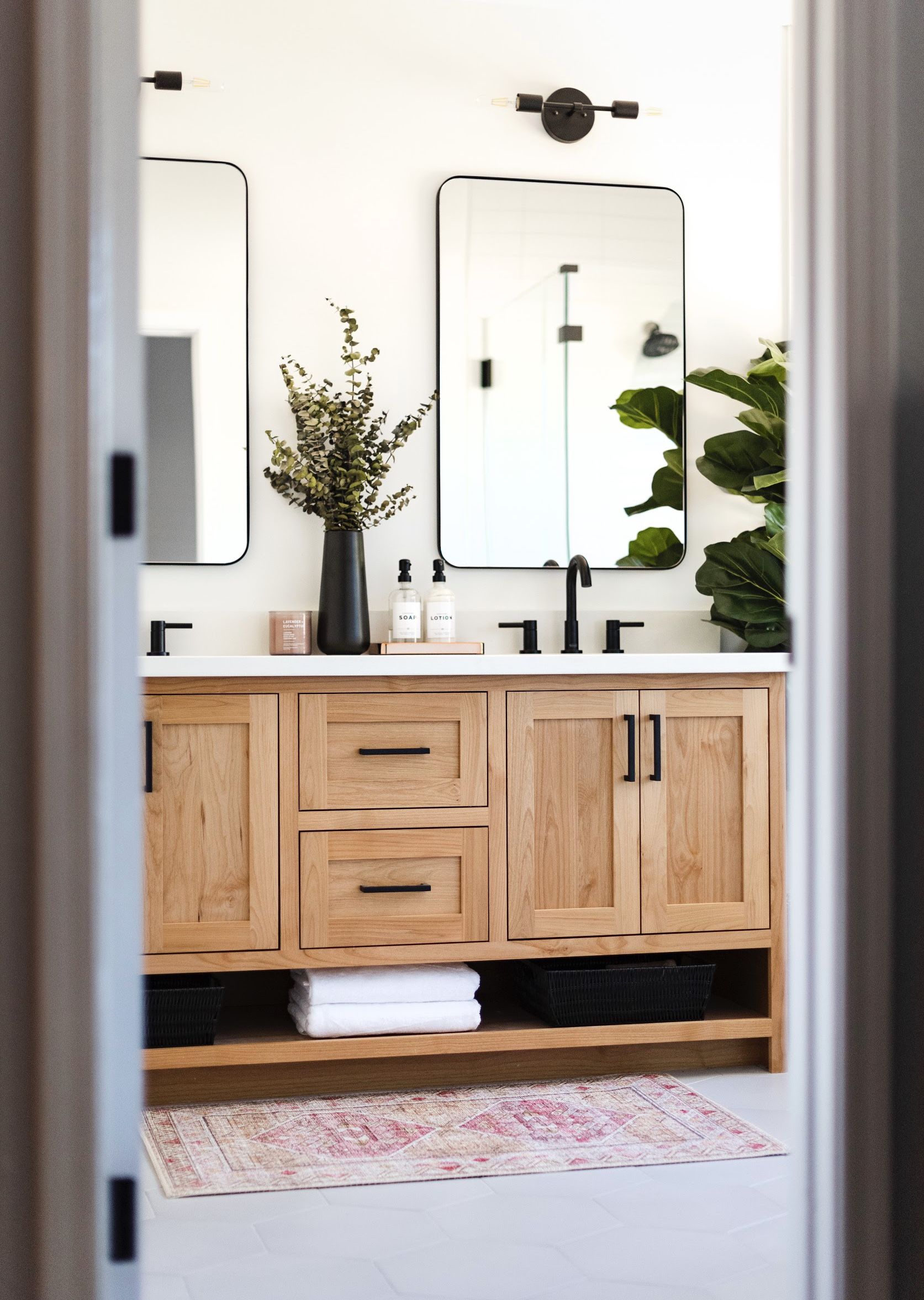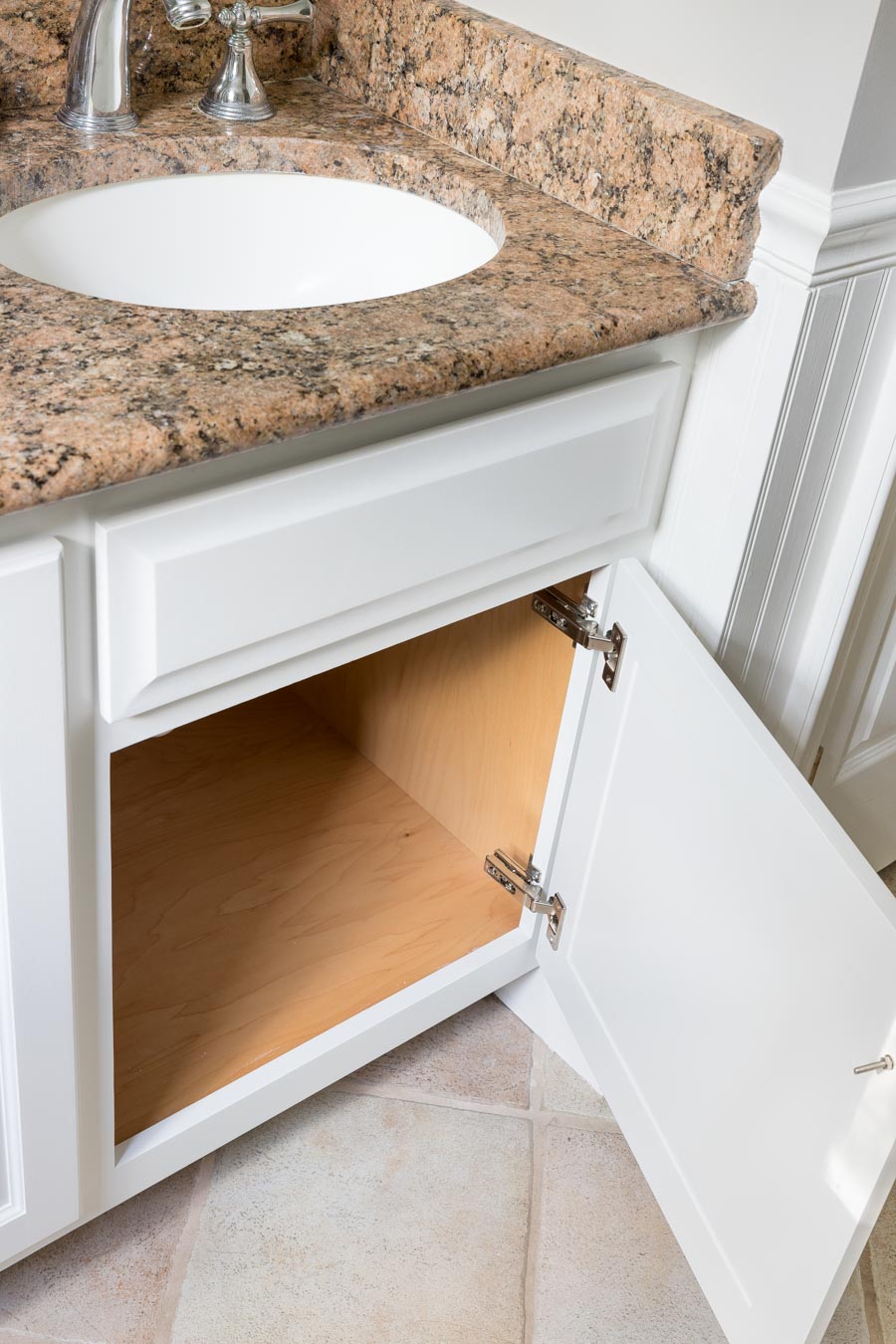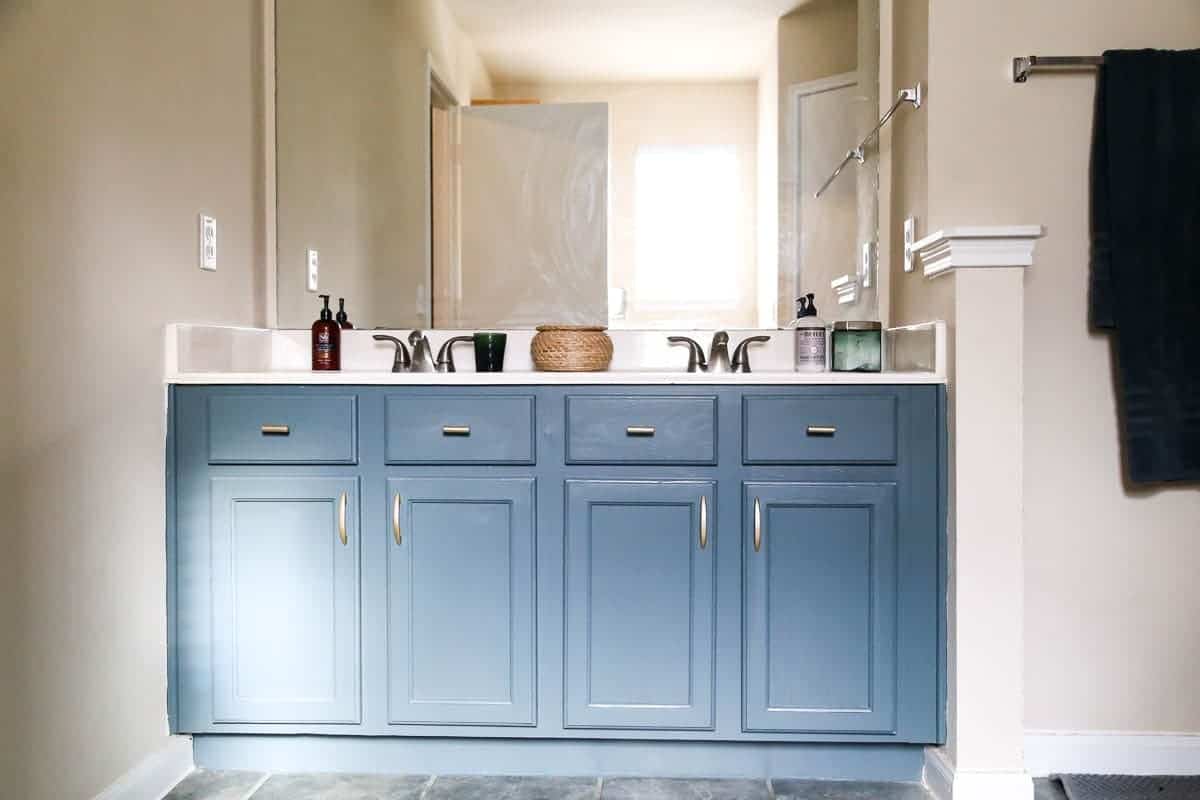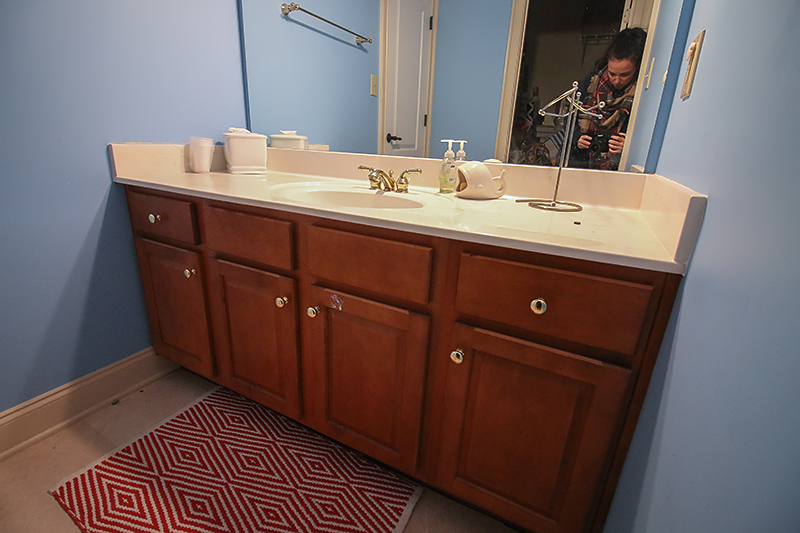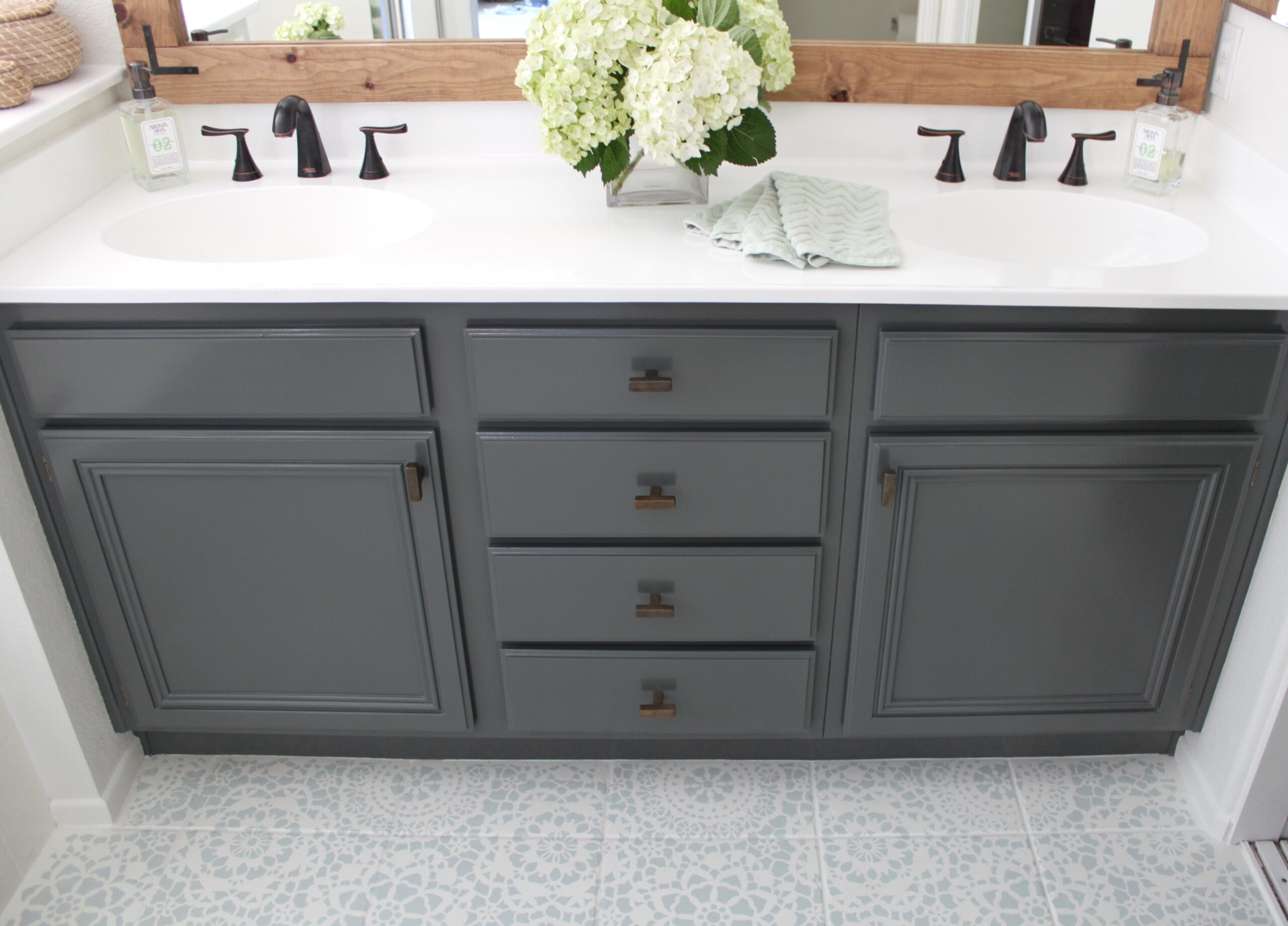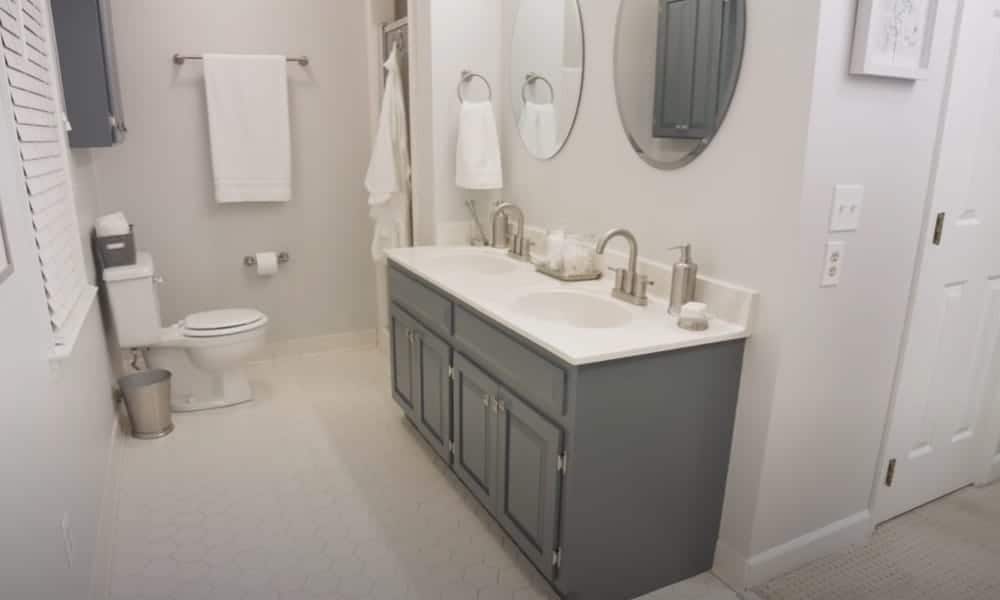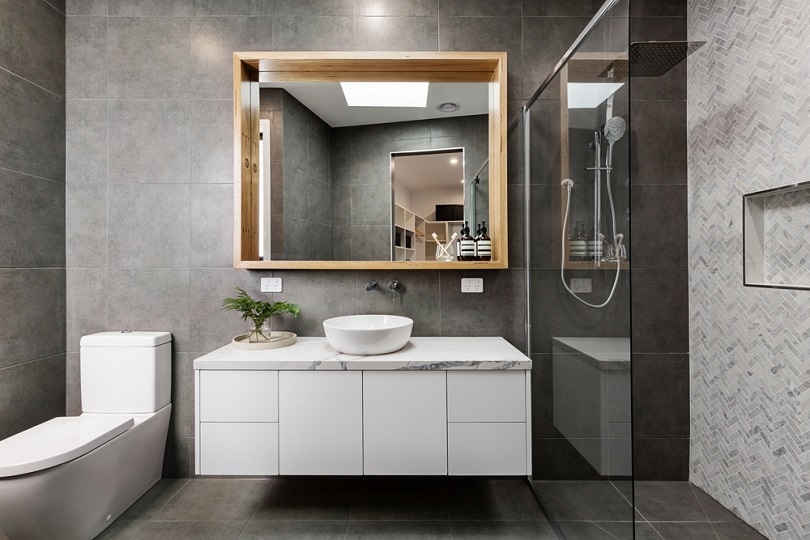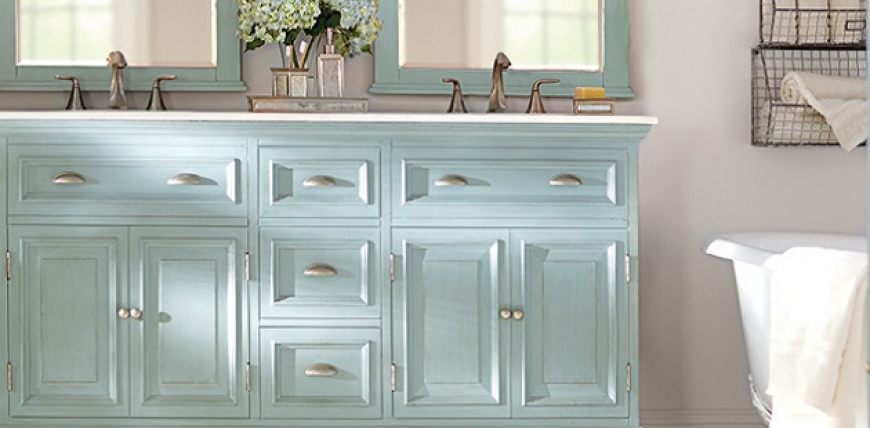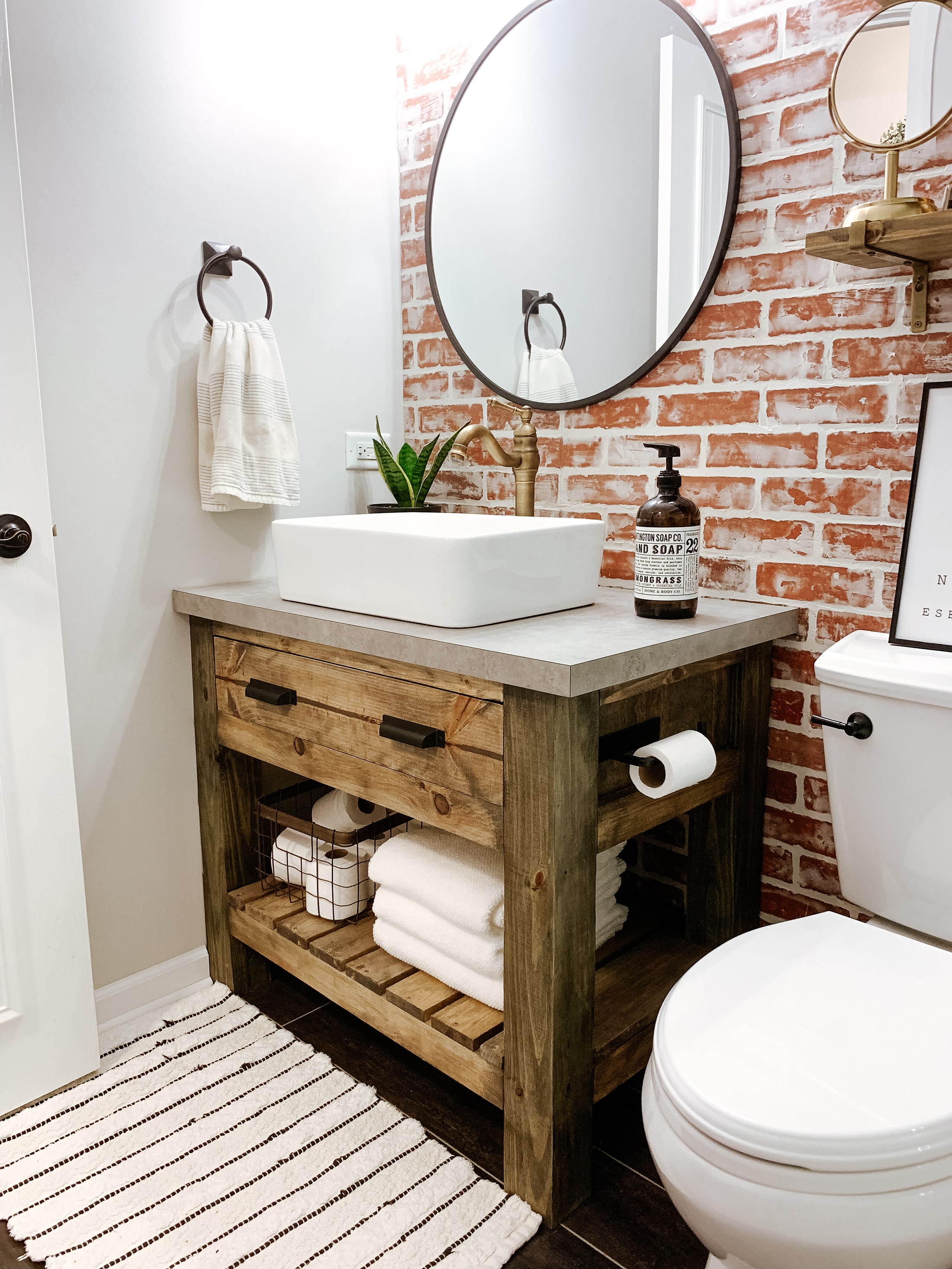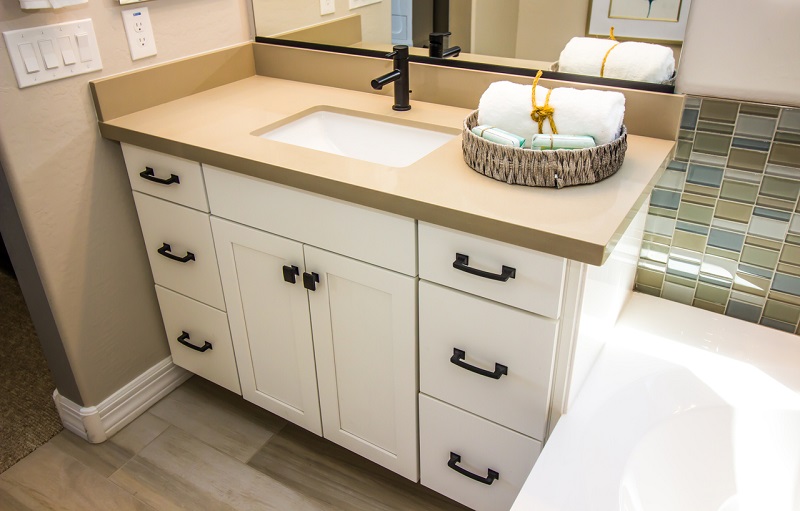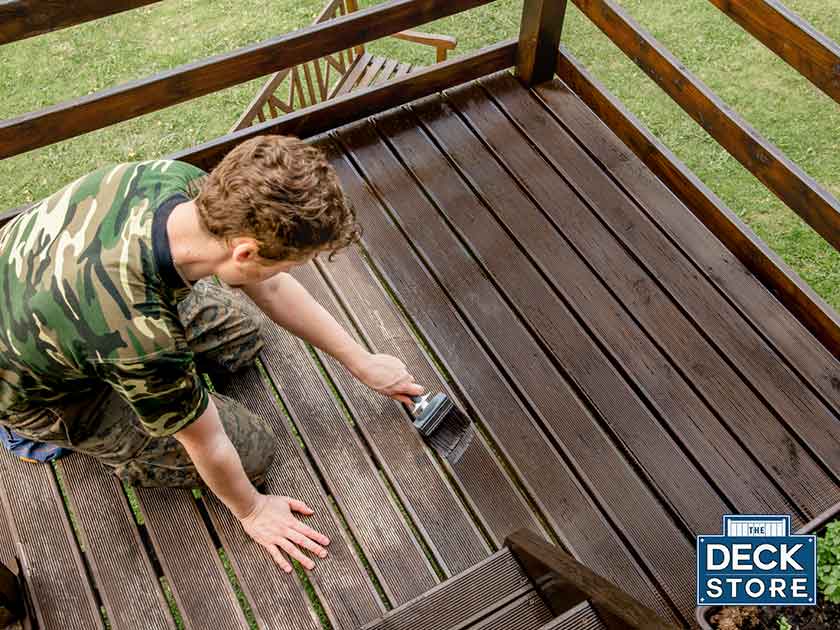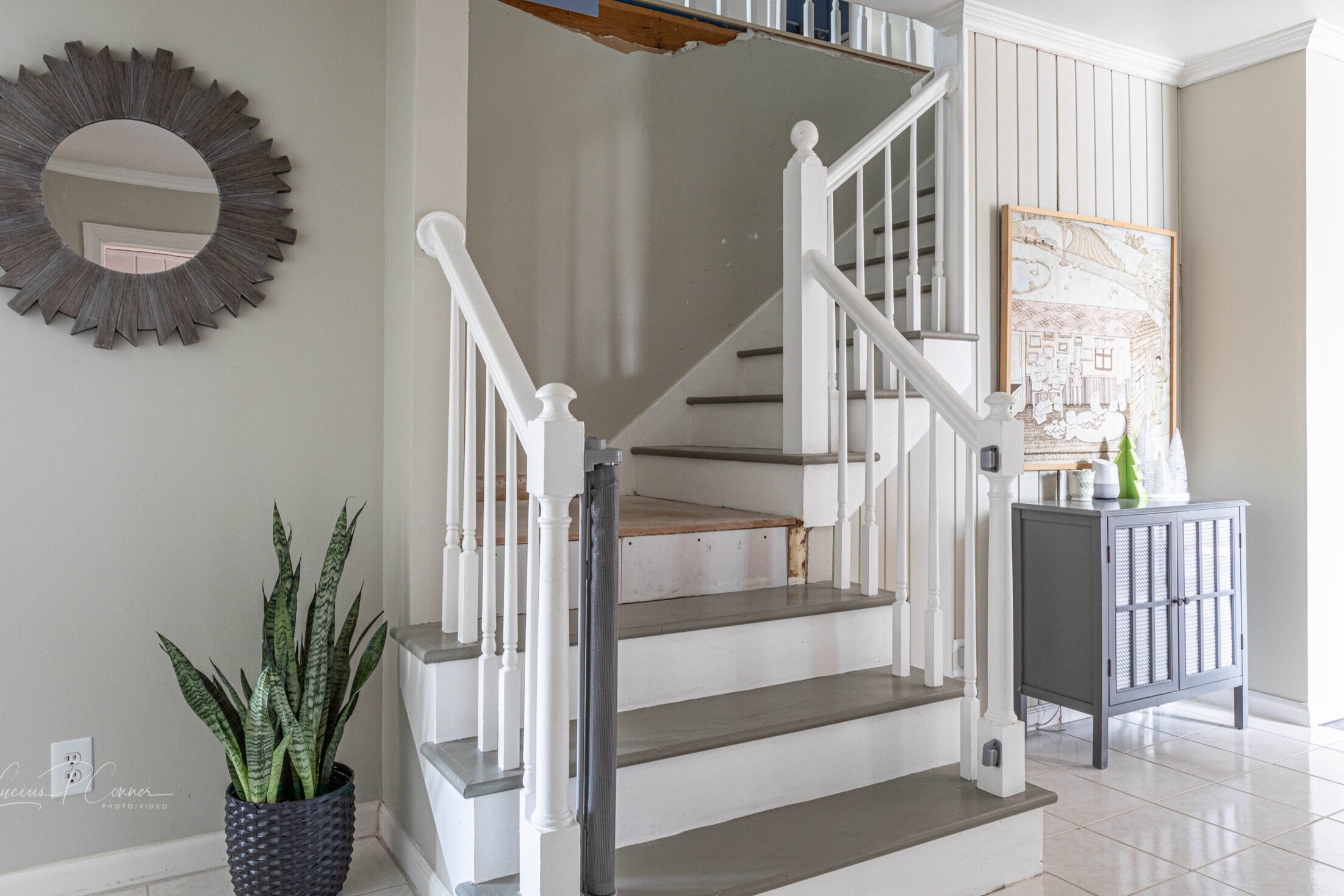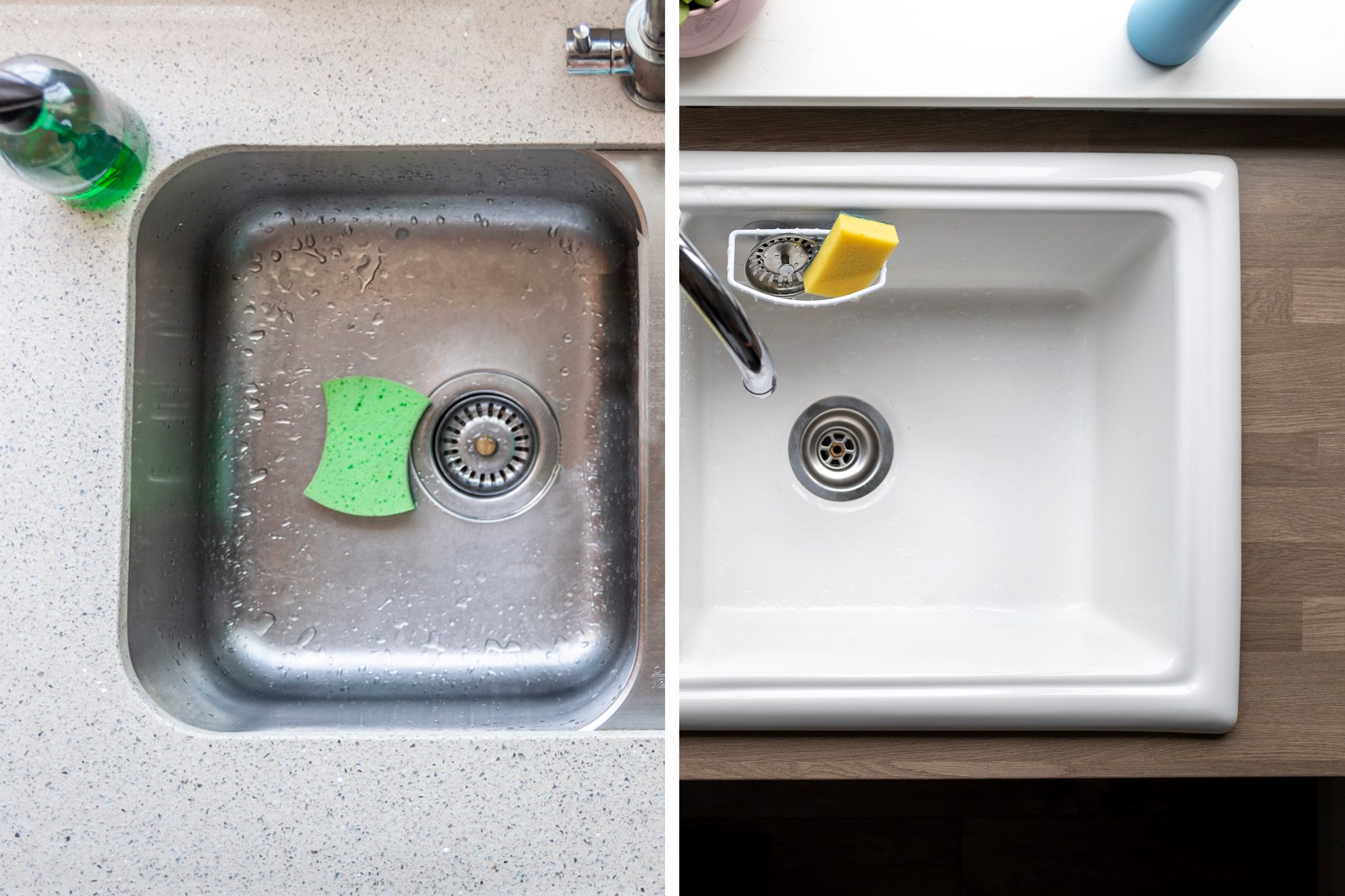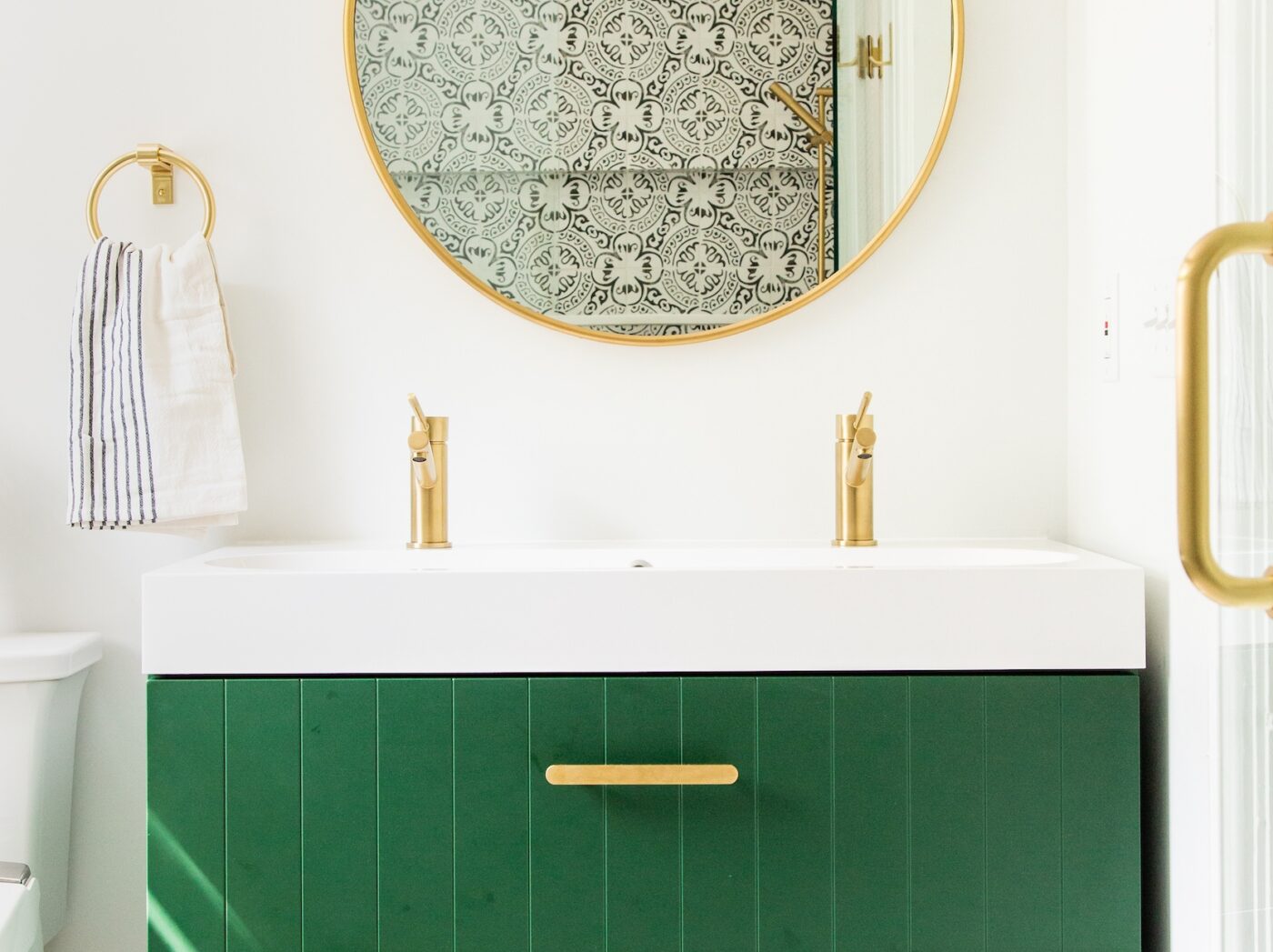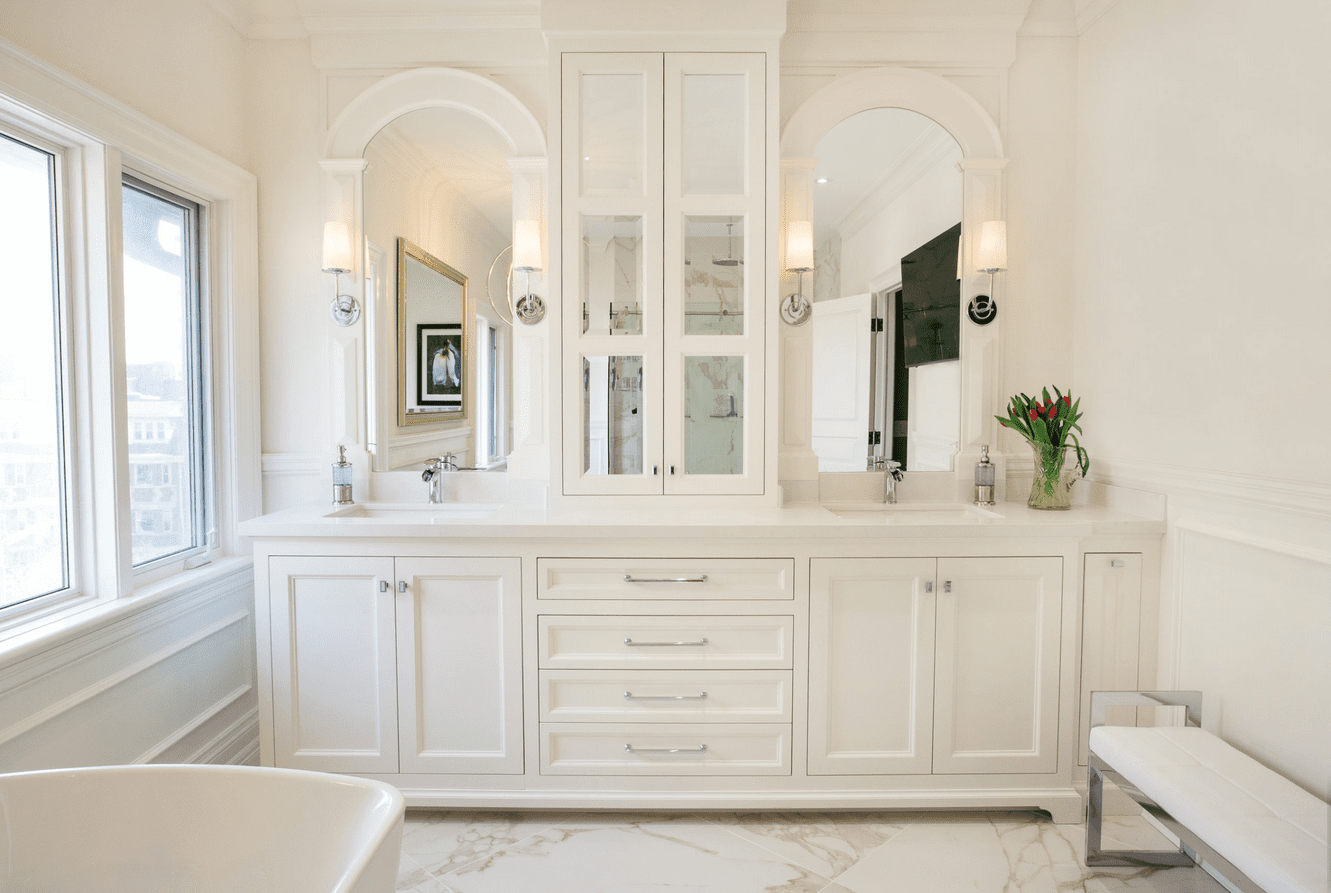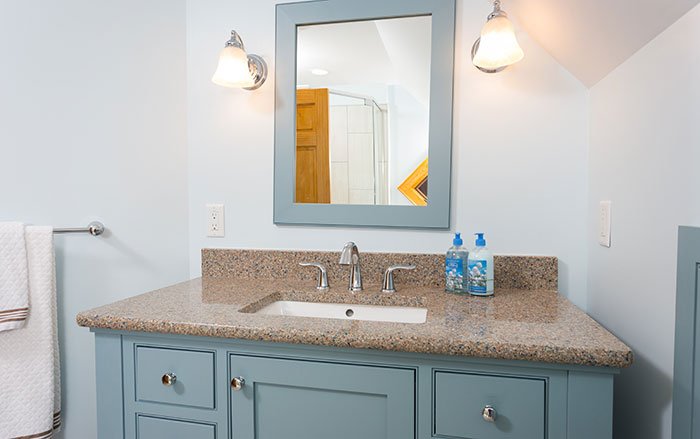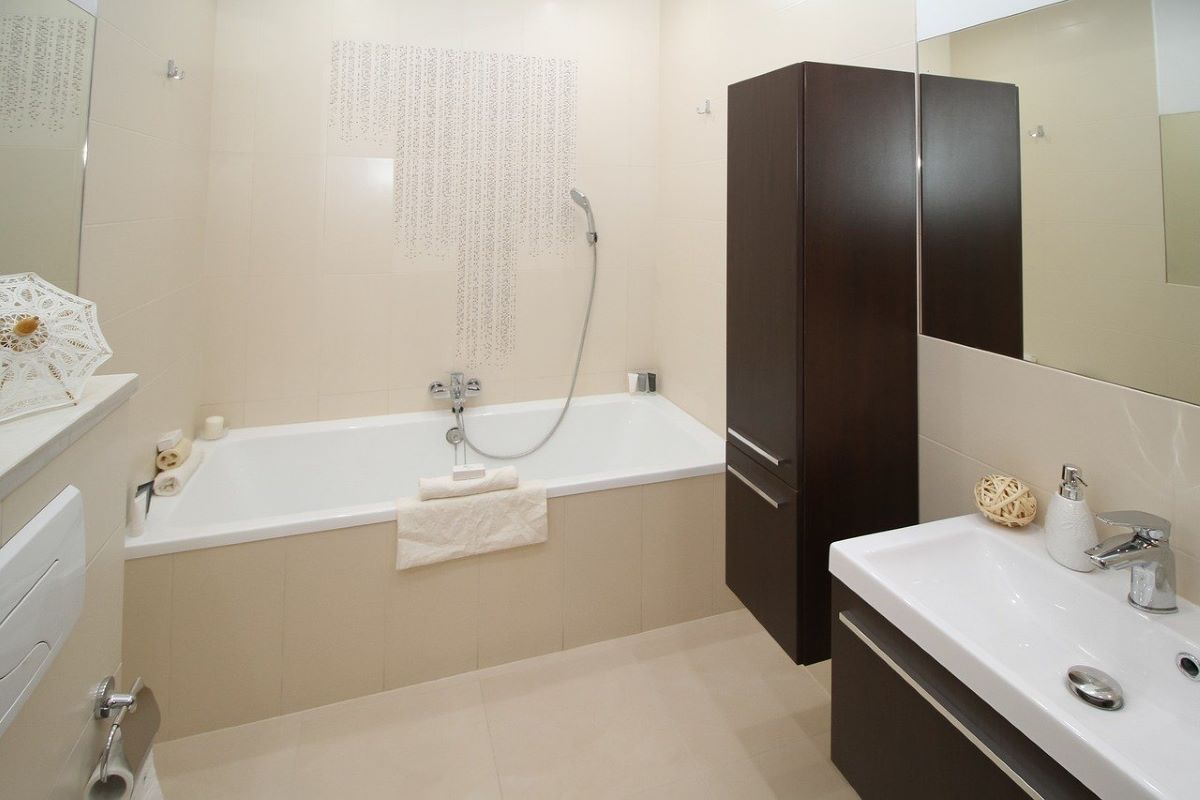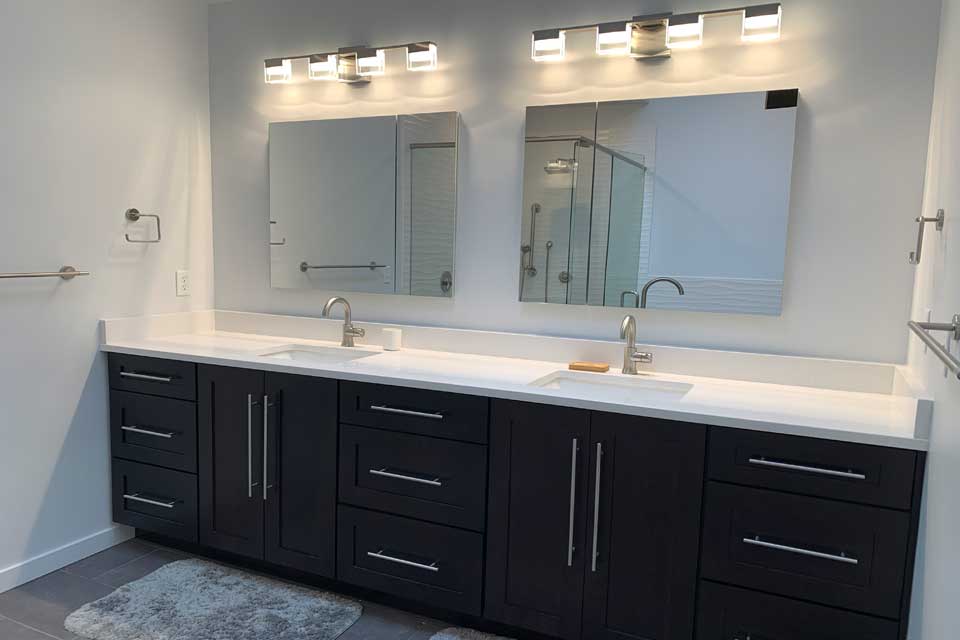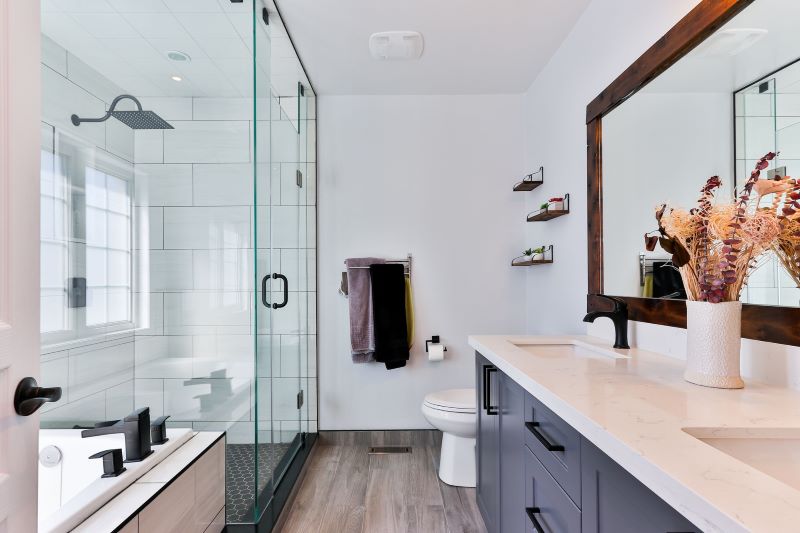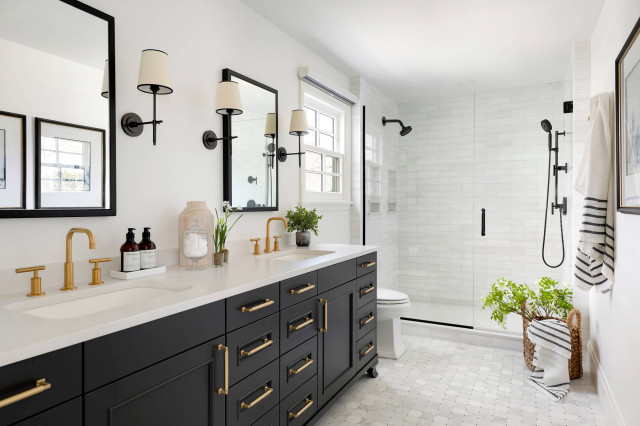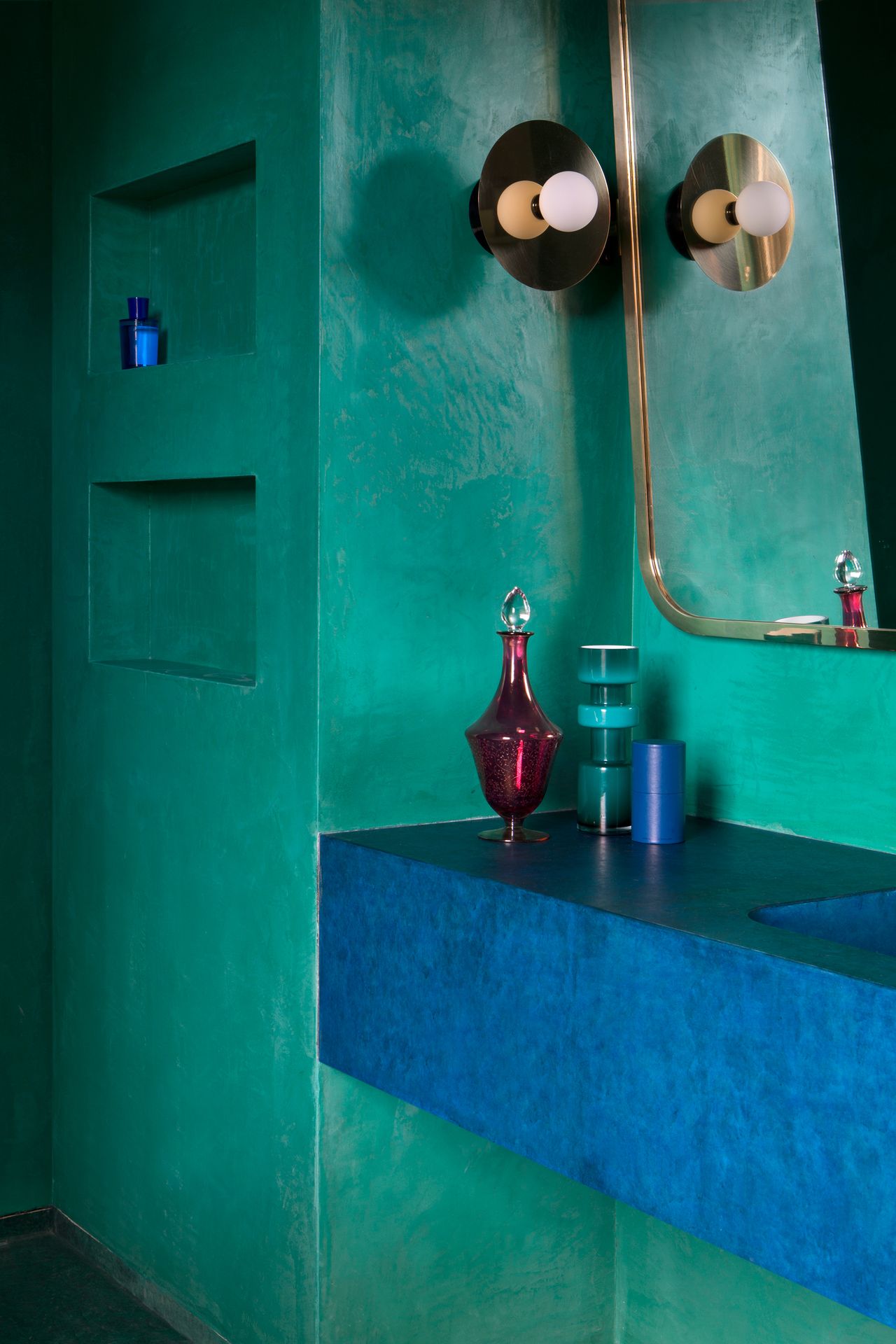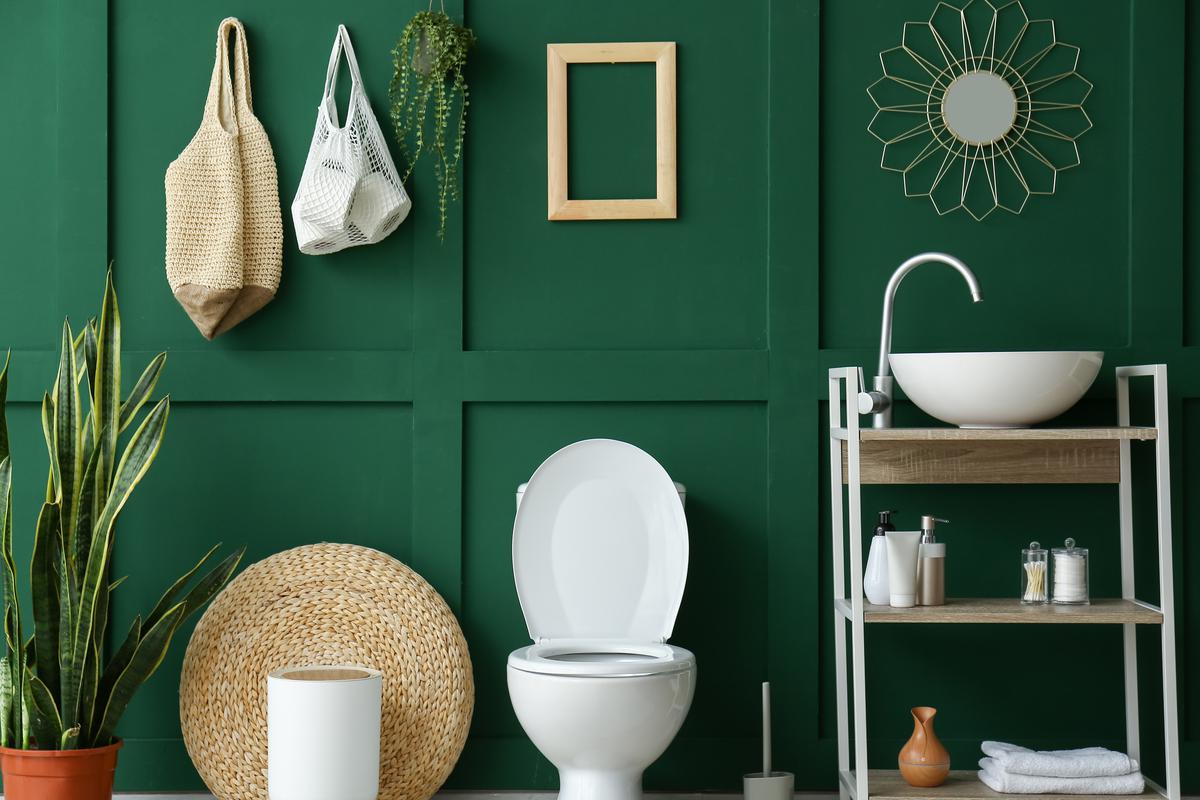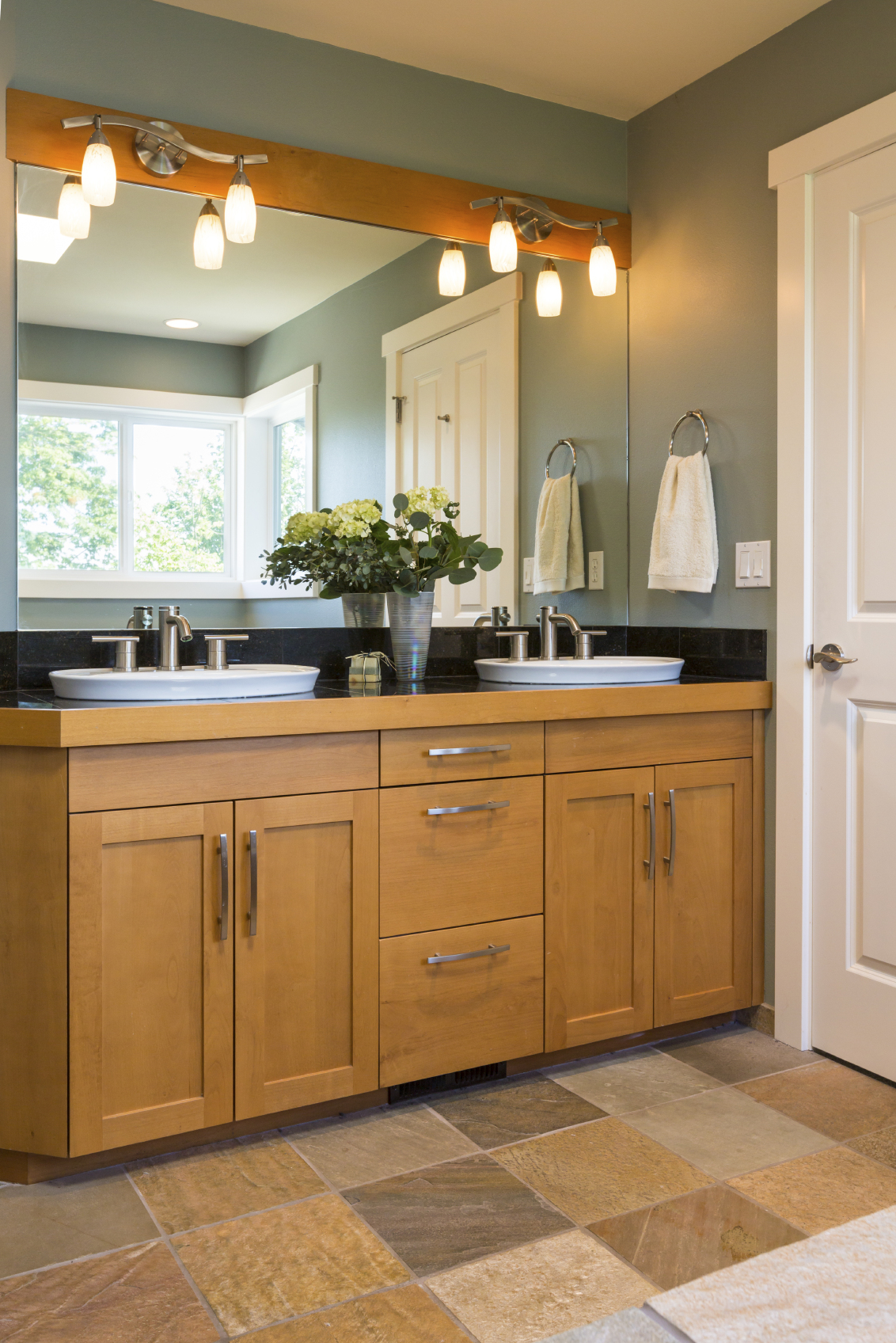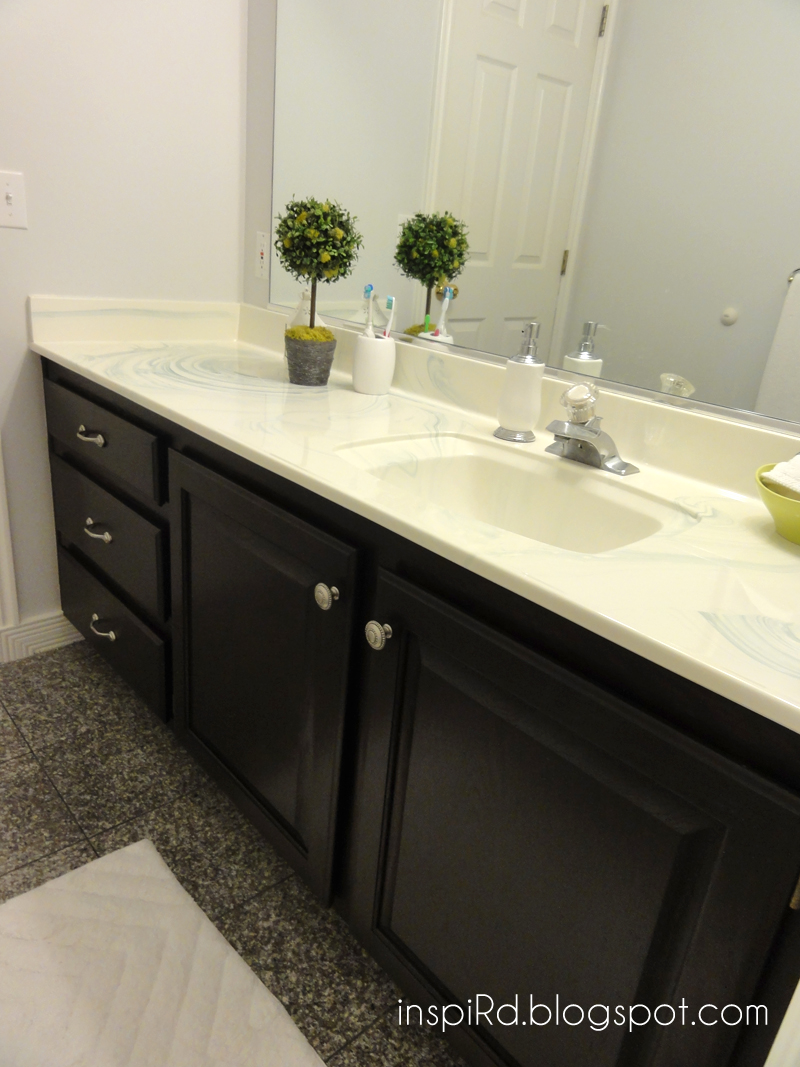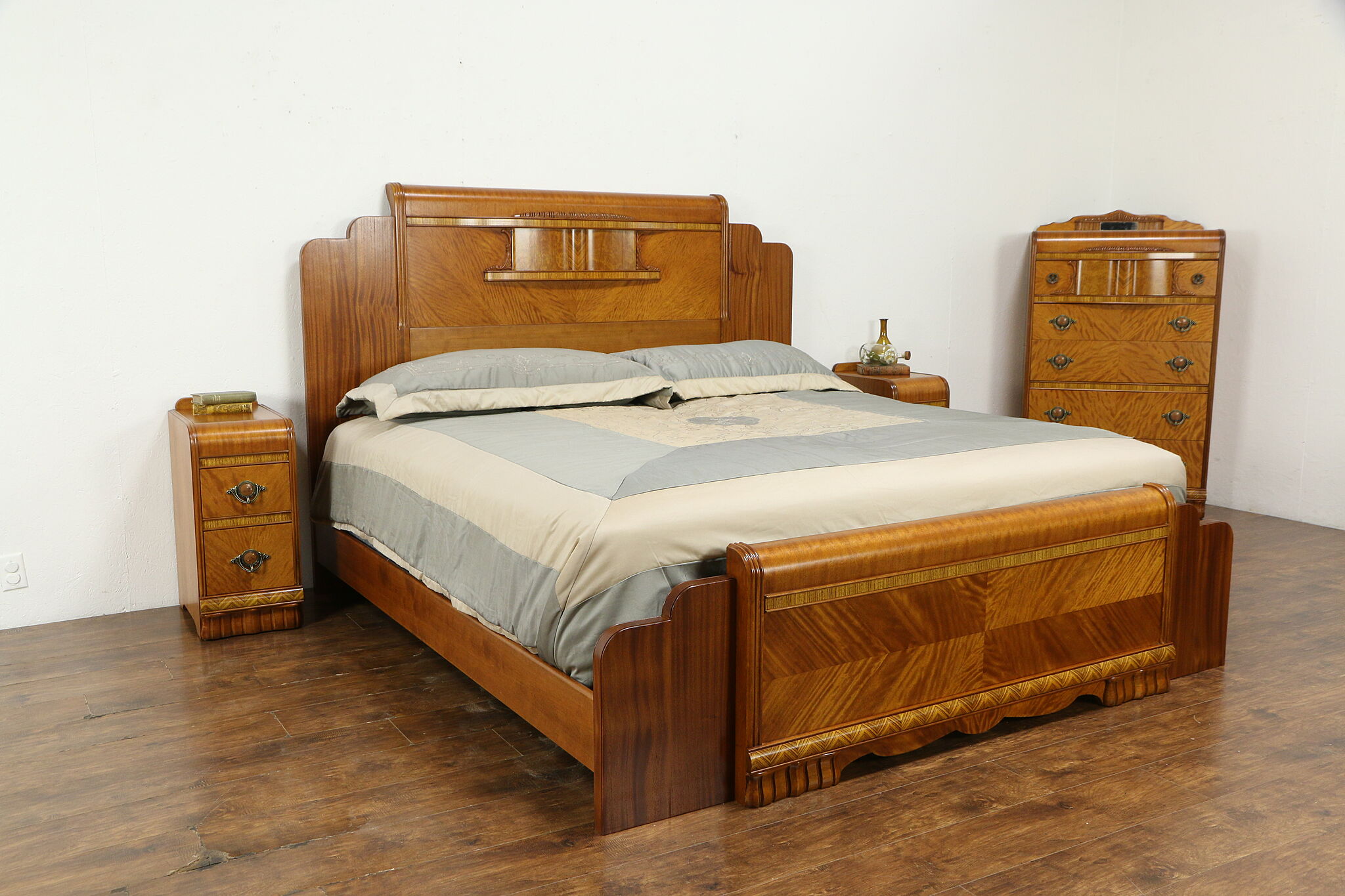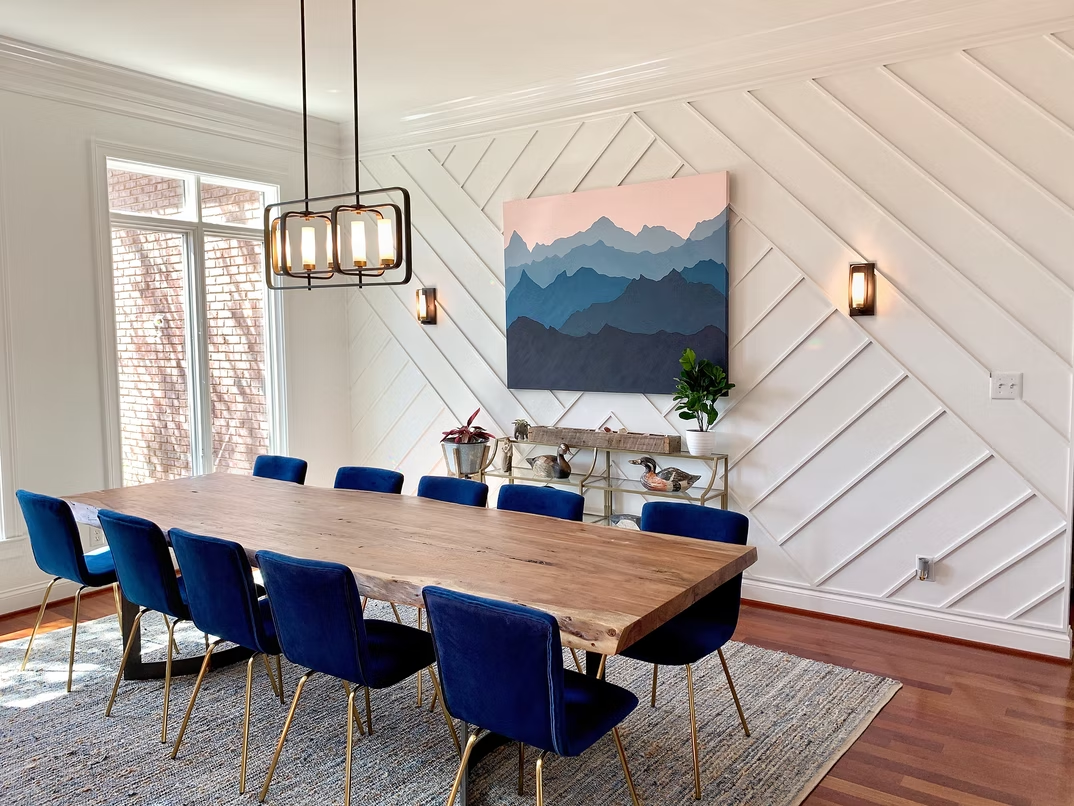Staining a bathroom vanity is a great way to update the look of your bathroom without breaking the bank. It can give your vanity a fresh and modern look, and with the right techniques, you can achieve a beautiful finish that will last for years to come. Here are 10 tips to help you achieve the perfect stain for your bathroom vanity.Staining a Bathroom Vanity: 10 Tips for a Beautiful Finish
The process of staining a bathroom vanity may seem daunting, but with the right tools and techniques, it can be done easily and efficiently. First, you'll need to remove the vanity drawers, doors, and hardware. Then, sand down the surface to remove any existing finish. After that, apply a pre-stain conditioner to ensure an even absorption of the stain. Finally, apply the stain with a brush or cloth, and let it dry completely before adding a protective top coat.How to Stain a Bathroom Vanity: A Step-by-Step Guide
When it comes to choosing the right stain for your bathroom vanity, it's important to consider the type of wood and the overall look you're trying to achieve. Some popular stain options for bathroom vanities include Minwax PolyShades, General Finishes Gel Stain, and Varathane Premium Fast Dry Wood Stain. Do your research and read reviews to find the best stain for your specific project.Best Stains for Bathroom Vanities: Top Picks and Reviews
One of the biggest benefits of staining your bathroom vanity yourself is the cost savings. Hiring a professional to do the job can be expensive, but with a little bit of time and effort, you can achieve a professional-looking finish on your own. Plus, by staining your vanity yourself, you have more control over the final look and can customize it to your personal style.DIY Bathroom Vanity Staining: Save Money and Get a Custom Look
When it comes to updating your bathroom vanity, you may be torn between staining and painting. Both options have their pros and cons, so it's important to consider your specific needs and preferences. Staining can bring out the natural beauty of the wood and is more durable, but painting allows for more color options and can easily cover up imperfections in the wood.Staining vs Painting a Bathroom Vanity: Pros and Cons
Proper preparation is key to achieving a beautiful stain on your bathroom vanity. Before you begin, make sure to thoroughly clean the surface to remove any dirt, dust, or grime. Sanding is also an important step to ensure the stain properly absorbs into the wood. Additionally, using a pre-stain conditioner can help the stain go on more evenly and prevent blotchiness.How to Prep Your Bathroom Vanity for Staining
Staining a bathroom vanity may seem simple, but there are some common mistakes that can ruin your finish. One of the biggest mistakes is not properly sanding the surface, which can result in an uneven and blotchy finish. Another mistake is not allowing enough time for the stain to dry before adding a top coat. Be sure to follow each step carefully to avoid these and other common mistakes.Staining a Bathroom Vanity: Common Mistakes to Avoid
The color of your stain can greatly impact the overall look of your bathroom vanity. When choosing a stain color, consider the existing color scheme in your bathroom and the type of wood you're staining. Darker stains can give a more dramatic look, while lighter stains can create a more airy and spacious feel. It's also helpful to test the stain on a small, inconspicuous area before applying it to the entire vanity.How to Choose the Right Stain Color for Your Bathroom Vanity
Before you begin staining your bathroom vanity, make sure you have all the necessary supplies on hand. These may include sandpaper, a sander, pre-stain conditioner, stain, top coat, brushes or rags for application, and protective gear such as gloves and goggles. Having all the supplies you need beforehand can make the staining process go much more smoothly.Staining a Bathroom Vanity: Supplies You'll Need
Achieving a smooth and even finish is the ultimate goal when staining a bathroom vanity. To avoid any blotchiness or unevenness, make sure to apply the stain in thin, even coats and always work in the direction of the wood grain. Also, be sure to wipe off any excess stain before it dries to prevent a tacky finish. With these tips, you can achieve a beautiful and professional-looking finish on your bathroom vanity.Staining a Bathroom Vanity: Tips for a Smooth and Even Finish
Staining Your Bathroom Vanity for a Custom, Professional Look

Why Stain Your Bathroom Vanity?
 If you're looking to upgrade your bathroom design, one easy and affordable way to do so is by staining your bathroom vanity. Not only does this add a touch of elegance and personalization to your space, but it also helps protect your vanity from daily wear and tear. Staining your bathroom vanity is a simple DIY project that can have a big impact on the overall look and feel of your bathroom. Plus, with the right tools and techniques, anyone can achieve a professional finish.
If you're looking to upgrade your bathroom design, one easy and affordable way to do so is by staining your bathroom vanity. Not only does this add a touch of elegance and personalization to your space, but it also helps protect your vanity from daily wear and tear. Staining your bathroom vanity is a simple DIY project that can have a big impact on the overall look and feel of your bathroom. Plus, with the right tools and techniques, anyone can achieve a professional finish.
Choosing the Right Stain
Preparing Your Vanity for Staining
 Before you begin the staining process, it's important to properly prepare your bathroom vanity. Start by removing all hardware, such as knobs and handles, and any drawers or doors. Use a degreaser to clean the surface of the vanity and sand it down with a fine-grit sandpaper to create a smooth surface for the stain to adhere to. You may also want to apply a wood conditioner to help the stain absorb evenly and prevent blotchiness.
Before you begin the staining process, it's important to properly prepare your bathroom vanity. Start by removing all hardware, such as knobs and handles, and any drawers or doors. Use a degreaser to clean the surface of the vanity and sand it down with a fine-grit sandpaper to create a smooth surface for the stain to adhere to. You may also want to apply a wood conditioner to help the stain absorb evenly and prevent blotchiness.
Applying the Stain
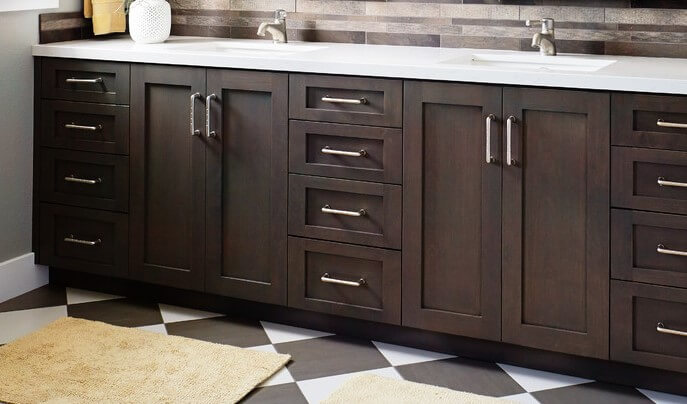 Once your vanity is prepped and ready, it's time to start staining. Using a brush, apply the stain in even strokes, following the direction of the wood grain. Make sure to work in small sections and wipe off any excess stain with a clean cloth. To achieve a darker, richer color, you may need to apply multiple coats of stain. Allow the stain to dry completely before applying a protective finish.
Once your vanity is prepped and ready, it's time to start staining. Using a brush, apply the stain in even strokes, following the direction of the wood grain. Make sure to work in small sections and wipe off any excess stain with a clean cloth. To achieve a darker, richer color, you may need to apply multiple coats of stain. Allow the stain to dry completely before applying a protective finish.
Finishing Touches
 After the stain has dried, it's important to add a protective finish to your bathroom vanity. This will not only protect the wood from water damage and scratches, but it will also give your vanity a polished, professional look. There are various types of finishes available, such as polyurethane, varnish, or wax. Choose the one that best suits your needs and apply it according to the manufacturer's instructions.
After the stain has dried, it's important to add a protective finish to your bathroom vanity. This will not only protect the wood from water damage and scratches, but it will also give your vanity a polished, professional look. There are various types of finishes available, such as polyurethane, varnish, or wax. Choose the one that best suits your needs and apply it according to the manufacturer's instructions.
In Conclusion
 Staining your bathroom vanity is a simple and cost-effective way to add a touch of personalization and elegance to your space. By choosing the right stain, properly preparing the surface, and applying a protective finish, anyone can achieve a professional-looking result. So why wait? Transform your bathroom vanity and elevate your overall bathroom design with this easy and rewarding DIY project.
Staining your bathroom vanity is a simple and cost-effective way to add a touch of personalization and elegance to your space. By choosing the right stain, properly preparing the surface, and applying a protective finish, anyone can achieve a professional-looking result. So why wait? Transform your bathroom vanity and elevate your overall bathroom design with this easy and rewarding DIY project.

